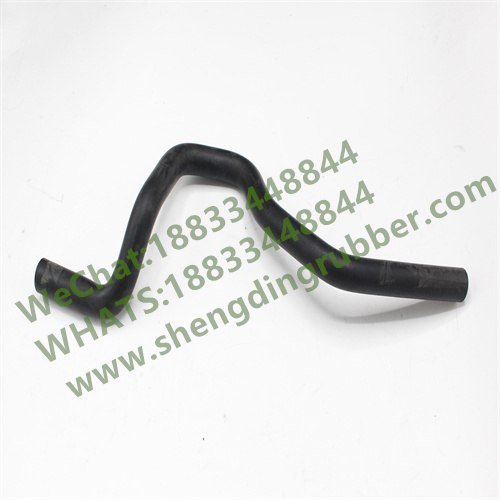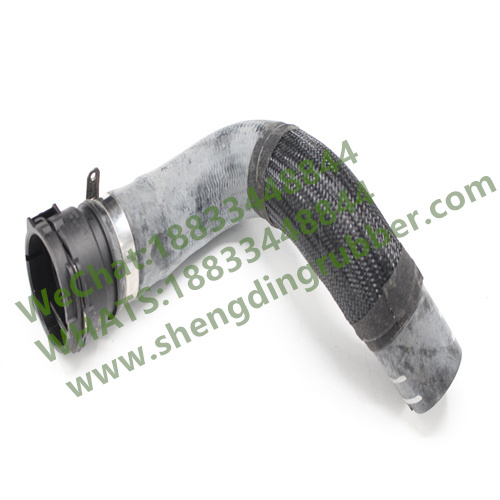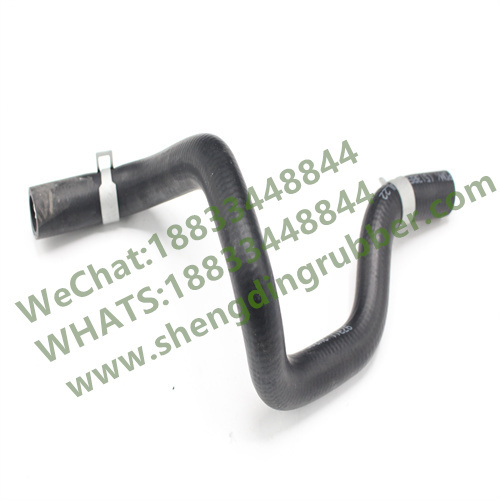How Weather Conditions Impact the Efficiency of Rubber Hoses in Automotive Applications
Release Time:
Jul 23,2025
How Weather Conditions Impact the Efficiency of Rubber Hoses in Automotive Applications Table of Contents Introduction Understanding Rubber Hoses Key Weather Factors Affecting Rubber Hoses Temperature Effects Humidity Effects UV Exposure Impact of Extreme Weather Conditions on Rubber Hoses Preventive Measures for Rubber Hos
How Weather Conditions Impact the Efficiency of Rubber Hoses in Automotive Applications
Table of Contents
- Introduction
- Understanding Rubber Hoses
- Key Weather Factors Affecting Rubber Hoses
- Impact of Extreme Weather Conditions on Rubber Hoses
- Preventive Measures for Rubber Hose Longevity
- Optimizing Rubber Hose Performance in Various Weather Conditions
- Conclusion
- FAQs
Introduction
In the automotive industry, rubber hoses play a pivotal role in ensuring the smooth operation of various systems, from cooling to fuel delivery. However, their performance is significantly influenced by weather conditions. Understanding how these environmental variables affect rubber hoses is essential for automotive professionals and vehicle owners alike. This article aims to provide an in-depth analysis of the interplay between weather factors and rubber hose performance, along with practical recommendations for maintaining their efficiency.
Understanding Rubber Hoses
Rubber hoses are flexible tubes made primarily from synthetic rubber compounds designed to transport fluids and gases in vehicles. These hoses are integral to various systems, including:
- **Cooling Systems:** Transporting coolant to maintain engine temperature.
- **Fuel Systems:** Delivering fuel efficiently from the tank to the engine.
- **Brake Systems:** Ensuring hydraulic fluid flows seamlessly for braking efficiency.
Given their critical functions, it is imperative to understand how external conditions can compromise their efficacy.
Key Weather Factors Affecting Rubber Hoses
Several weather factors can significantly influence the durability and performance of rubber hoses. Each of these elements can lead to various forms of wear and tear, which we will explore in detail.
Temperature Effects
One of the primary weather conditions affecting rubber hoses is temperature. Extreme fluctuations can lead to:
- **Expansion and Contraction:** High temperatures can cause rubber to expand, while cold temperatures may lead to contraction. This cycle can create stress on the hose material, leading to cracks or leaks.
- **Softening and Hardening:** Prolonged exposure to high temperatures can soften rubber, making it more susceptible to wear, while extremely low temperatures can harden the material, reducing flexibility.
To ensure optimal performance, it is crucial to monitor temperature conditions and consider the specific rubber compounds used in hose manufacturing.
Humidity Effects
Humidity plays a critical role in the lifecycle of rubber hoses. High humidity can lead to:
- **Mold and Mildew Growth:** Excess moisture can promote the growth of mold and mildew on rubber surfaces, degrading their integrity.
- **Increased Brittleness:** Conversely, in low-humidity conditions, rubber can dry out, becoming brittle and more prone to cracking.
Regular inspection and cleaning can mitigate these issues, promoting the longevity of rubber hoses.
UV Exposure
Ultraviolet (UV) rays from sunlight can have a detrimental impact on rubber hoses:
- **Degradation of Materials:** UV exposure can break down the chemical bonds in rubber, leading to fading, cracking, and overall deterioration of the hose.
- **Reduced Lifespan:** Continuous exposure to UV radiation can significantly shorten the lifespan of rubber hoses, necessitating more frequent replacements.
Utilizing hoses with UV-resistant compounds or protective coverings can help combat these effects.
Impact of Extreme Weather Conditions on Rubber Hoses
Extreme weather conditions, such as heavy rainfall, snow, and high winds, pose additional challenges for rubber hoses:
- **Flooding Risks:** Heavy rains can lead to flooding, which can submerge rubber hoses and lead to prolonged exposure to water, accelerating degradation.
- **Snow and Ice:** In colder climates, snow and ice can add weight to hoses, potentially leading to physical damage or disconnections.
- **Wind Damage:** Strong winds can cause debris to strike rubber hoses or dislodge them from their fittings, leading to leaks.
Recognizing these risks can help in taking proactive measures to protect your rubber hoses during extreme weather events.
Preventive Measures for Rubber Hose Longevity
To ensure that your rubber hoses perform optimally, consider the following preventive measures:
- **Regular Inspections:** Conduct routine checks for signs of wear, such as cracks or bulges. Early detection can prevent more significant issues down the line.
- **Proper Installation:** Ensure that hoses are installed correctly, with appropriate fittings and without excessive tension.
- **Temperature Management:** Whenever possible, keep hoses away from extreme heat sources or areas prone to freezing temperatures.
- **Use Protective Covers:** Employ UV-resistant covers for hoses exposed to direct sunlight to reduce UV degradation.
Implementing these measures can enhance the lifespan and performance of rubber hoses significantly.
Optimizing Rubber Hose Performance in Various Weather Conditions
To maximize performance regardless of weather conditions, consider the following strategies:
- **Select Appropriate Materials:** Choose hoses made from materials specifically designed for your operational environment. For instance, silicone hoses offer excellent high-temperature resistance.
- **Maintain Cleanliness:** Regularly clean hoses to prevent the buildup of dirt or grime, which can cause wear and impede performance.
- **Monitor Environmental Conditions:** Use tools to monitor temperature and humidity levels, allowing for timely interventions when necessary.
Adopting these strategies will ensure that your rubber hoses remain efficient and reliable throughout their lifespan.
Conclusion
Weather conditions exert a profound influence on the performance of rubber hoses in automotive applications. By understanding the effects of temperature fluctuations, humidity levels, and UV exposure, automotive professionals and vehicle owners can take proactive measures to safeguard these critical components. Through regular inspections, appropriate material selection, and the implementation of preventive strategies, it's possible to enhance the longevity and efficiency of rubber hoses, ensuring optimal performance regardless of environmental challenges.
FAQs
1. How often should I inspect my rubber hoses?
Regular inspections should be conducted every few months, or more frequently if operating in extreme weather conditions.
2. What are the signs of a deteriorating rubber hose?
Signs include cracking, bulging, leaks, or a noticeable decrease in flexibility.
3. Can I use any type of rubber hose in my vehicle?
No, it's essential to use hoses specifically designed for your vehicle's requirements and environmental conditions.
4. How can I protect my rubber hoses from UV damage?
Using UV-resistant covers or selecting hoses made from UV-resistant materials can provide effective protection.
5. What should I do if I find a leak in my rubber hose?
If a leak is detected, it's advisable to replace the hose immediately to prevent further damage to the system.
This detailed exploration empowers you to make informed decisions about maintaining rubber hoses, ensuring they remain effective in varying weather conditions.
Key words:
What Else Might You Learn?







